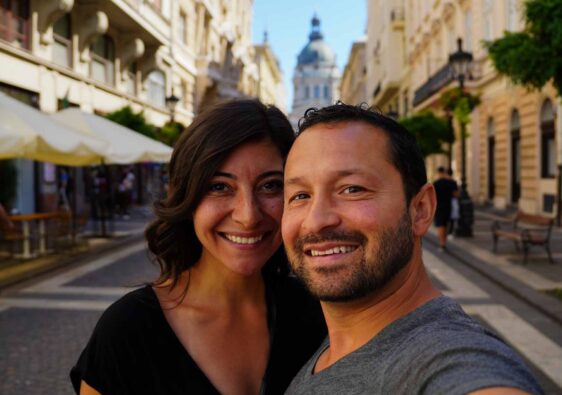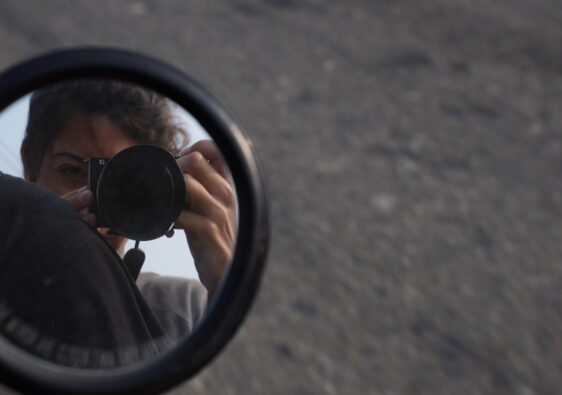Avoiding scams while in Indonesia – these are a few we came across first hand during our trip through Indonesia in November/December 2022.
- Batik scam: random locals may approach you in what seems to be a sincere interest in where you’re from and strike up a casual conversation . However as the conversation progresses they will mention a batik art exhibit or an art studio supporting local artists and art students. They essentially funnel you to a small studio, show you how batik is made and then try to sell you on “handmade” batik art at exponentially high prices (not high according to US or European standards but significantly above average cost and may set you back $50 to hundreds of dollars depending on how much you buy). Beware – many places sell printed batik instead of handmade pieces. As a foreigner they’re counting on your ignorance and the difficulty differentiating between the two. While printed pieces are equally as beautiful they are significantly cheaper and of lesser quality. Check out this article on how to different between the two: ***
How to avoid the scam: Make sure you research batik and visit a store or warehouse where batik is still being hand made so you can see and feel the real thing. Also do market research so you know what things actually cost. Check out a few shops and compare pricing. If you’re at an art studio, like most legit studios, they should have information on the artist and be able to give you extensive information on the artist and piece itself. If they don’t seem to know much then it’s likely a scam/fake. If you’re unsure, wait and return later. Believe me, they’ll still be there. Never pay full price always negotiate a lower price as they’re likely charging you the tourist rate. Unfortunately we were duped. Quickly after leaving the shop we saw the same guy who approached us funneling another couple to the same spot. Luckily we took our 2 pieces to a legit batik shop where they still hand make their items and they confirmed that luckily the pieces we bought were real but informed we overpaid. A few days later we had countless strangers approach us with the same pitch the other guy sold us on. People came up with some elaborate stores and display such sincerity but of course it is all a part of their act.
- Money exchange stands: Many stands are infamous for making money disappear. They also tend to use smaller bills creating bigger stacks of cash to throw you off and discourage you from counting it all in front of them and of course they assume we will take their word for it. You may notice them constantly touching the stacks of money while counting it as if performing a magic trick, and they are – they’re making bills disappear right before your eyes.
How to avoid the scam: 1. Make sure you are both in agreement about the money they said they’d give you. I’d also take a picture of what they display on their calculator AND make sure you do the calculations yourself to ensure you’re getting the right exhange rate. 2. Make sure you count the money in front of them as soon as they hand it over. Even though they are counting it in front of you before they hand it to you they’ve figured out a way to make money magically disappear.
Unfortunately this happened to a friend. 3. Be assertive and demand the full amount should you discover they’ve shorted you. If they go back on their word and claim you agreed to a smaller amount insist that it is not what was discussed and demand the full amount. They count on people giving up and just going along with what they’ve said.
- Cost round ups and change shortages: Can’t tell you how many times we were handed less money than what we were owed and it isn’t until we call them out where they will say it was an accident and then cough up the correct amount. We quickly became aware of this when we were charged twice as much for gas at an actual gas station (what is wrong with people?!). The attendant knew we had no idea what the fees were so he took advantage of the situation. Luckily we only lost out on 2 bucks. Surprisingly, we also noticed in bigger markets like alfamart and indomaret they tend to round up the cost and short you. Even if it’s just 10 rupiah they should be giving you the exact amount of change back and also shouldn’t be rounding up the cost. If the roles were reversed you better believe they’d be asking for the exact amount owed.
How to avoid the scam: always make sure you confirm the price of the item you’re buying. If you’re at a store/restaurant check the itemized receipt to ensure “accidental” additional items weren’t added to your bill. I also make a note of the price on the menu vs what they’ve listed on the receipt as they sometimes don’t match up.
If you pay with cash, make sure they hand you the correct amount of change – always count it right then an there. Insist on paying the actual amount as well as receiving the correct amount of change. If we don’t do this then we’re actually encouraging this type of behavior to continue.
- Scooter scam: the biggest scam is their tendency to over charge. They will quickly come down in price if they realize you’ve done your homework and you negotiate. Some people lied and tried to get us to pay much more stating the bike had a “special permit” to enter national parks. Of course this was a lie. Some places tried to charge us an additional fee for riding in certain areas after the fact which just makes no sense. We stood firm and only paid the initial quoted amount. This never happened to us but I’ve also heard some places will track the bike, and while you’re away from it steal it or damage it and then demand crazy amounts of money.
How to avoid the scam: its always best to rent a scooter from a rental shop as opposed to some random person who approaches you off the side of the road. Search Google for reviews and stick with the reputable shops. This isn’t always possible, so try to use your better judgment. If something doesn’t seem right, trust your gut and walk away. Make sure you take video/pictures of the condition of the bike prior to driving off the lot and it’s better if they see you do this. Don’t make a show of it but take your time, really its something they should encourage. Always check tires, signal lights, etc. to ensure the bike is safe to ride and I recommend also taking it for a quick test ride. Insist on two helmets if there are 2 riders. Make sure you jot down their contact info and confirm that someone is readily available should anything happen (flat tire etc.). We got a flat in the mountains of Thailand and our rental place was easy to contact and they helped us communicate to locals and we were sorted within the hour. Also take pictures of the gas meter. Indonesia was infamous for giving us a bike with an empty tank. They bank on you filling up the the tank only for you to only need a quarter tank. Generally the rule is for you to return the bike with the same amount of gas that they handed it over with. Most countries provided us with at least a half to a full tank of gas. Do your market research prior to renting a bike. Ask locals what the average price of a scooter rental is. Scope out a few places to compare pricing before renting. Also, negotiate. They always start at their highest rate and often come down in price. NEVER leave your passport or IDs with these places or any business for that matter. It is standard practice for scooter rentals to ask for your passport but never hand it over. Instead provide a picture or make a copy and or give the bigger deposit (if it’s a reasonable amount). This is enough for them. It’s understandable they want some kind of collateral as some tourist have been known to wreck their scooters. If they refuse to rent the bike because you don’t want to leave your passport then find another spot. We’ve never handed over our passport and have still been able to rent scooters. When in doubt, ask a local you trust like hotel staff. Even better, go to the tourist office and check in with them.
- Random police stops: We luckily didn’t experience this but too many locals and expats we met warned us about this so I feel it’s important to share. Apparently some police officers will arbitrarily pull tourists over. An expat residing in Bali said they typically have a list of things they are checking and are pretty much just looking for any reason to give you a citation and are hoping to be bribed.
How to avoid the scam: Always make sure all riders are wearing a helmet as this is what they typically pull tourists over for. Men, keep your shirts on while driving. Our expat friend was pulled over for this. Get an international license and have it on you. Also, be respectful of the rules and drive safely. Don’t drive wrecklessly and never drink and drive. **Only keep a small amount of cash in your wallet**. Hide the rest elsewhere. If they happen to cite you, we were advised to play nice and dumb and ask if you can pay the citation right then and there – only giving the small amount that’s in your wallet. If they see you have more then they will try to charge more.
- False entrance fees: we’ve come across folks who will want to charge a fee to free sites like temples, or outdoor sites like waterfalls, volcanoes, etc. Many people will also flag you down and act as if you need to park in their lot and of course pay. Same goes for guides. Many locals set post up at tourist sites and may pressure you into hiring a guide especially to visit outdoor sites and while some places do require guides not all locations require it. Stand firm as they will eventually back down. Always confirm pricing with locals or online prior to your visit. Also drive up to the site to confirm the parking situation prior to paying to park with some random person. Often times parking is free or there is a nominal fee.
A note on assertiveness: at first we felt it was rude to question people or even verify pricing but we’ve learned you have to do this. It’s not rude to ensure both parties are on the same page and it’s ok to be assertive when confronting someone who may be trying to scam you. No need to be disrespectful or insulting but it’s totally OK to assert yourself and call people out even if they appear bothered by it. At the end of the day you need to ensure your safety and make sure those few bad apples aren’t ripping you off or straight out stealing from you.
- The “taxi mafia”: while this didn’t happen to us we heard first hand from some travelers who experienced this and I’d also read about this on several blog posts so I figure it’s best to share what we know. Some taxi drivers in Indonesia have been known to be strongly against rideshare companies like Uber, Grab, etc. I’ve heard they will go to great lengths to get tourists to utilize their services over others including public transportation. They’ve even been known to act out aggressively towards grabshare drivers and have been pretty threatening towards tourists as well. A Swiss couple we met had taxi drivers run off their grab driver as they rushed the grab drivers car and aggressively yelled at him resulting in the couple losing their ride. They said it was a pretty scary experience. We’ve also read that some taxi drivers are in cahoots with local bus drivers who will drop you off at the incorrect station and insist you get off so that you can then take a taxi and of course pay a large fee.
How to avoid the scam: honestly this may be a tough one to avoid and it’s likely we didn’t experience this much because we tended to rent scooters to get around town.
We simply tried to book grab drivers on the down low. We tended to request grab drivers from safer areas like right in front of our hotel where there’s typically a security guard or go into a less busy areas where there weren’t taxi drivers around. I would also reference Grab and InDrive (if it’s available in the country you’re in) to check out taxi fares. That way you know what you should be paying vs the price you’re quoted which is typically 2-3x the average cost. I really love the InDrive app which shows you the average taxi fare for the location you’re headed to and allows you to set your price and negotiate with the driver before pick up. However, the app is cash only. While grab fares are a bit higher it was a great alternative to use when running low on cash as Grab accepts card payment.



